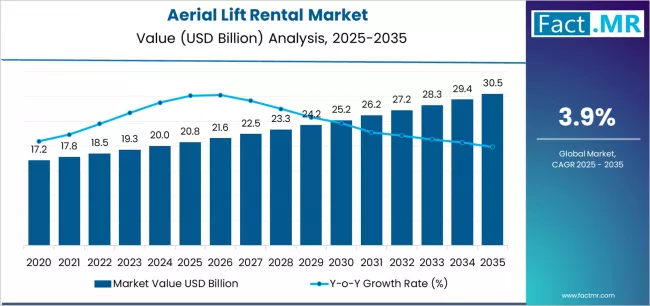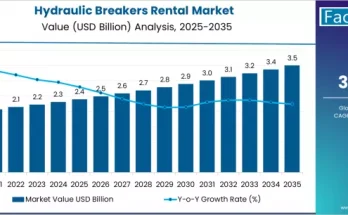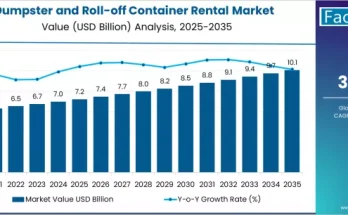As industries increasingly focus on safety, operational efficiency, and cost optimization, the aerial lift rental market is emerging as a key solution for businesses requiring elevated work platforms. Aerial lifts, including boom lifts, scissor lifts, and vertical mast lifts, are essential for tasks that demand safe and flexible access to heights, such as construction, maintenance, utilities, and warehousing operations.
The growing preference for renting equipment over ownership reflects the need for operational agility. Companies benefit from access to the latest technology without the capital expenditure, maintenance responsibilities, or storage constraints associated with purchasing machinery. This trend is redefining how organizations manage projects that involve work-at-height activities across multiple industries.
Market Overview
The aerial lift rental market is driven by the increasing adoption of flexible, short-term equipment solutions in sectors where elevated work is routine. Renting aerial lifts allows businesses to scale resources according to project demands, maintain safety compliance, and leverage advanced equipment without long-term investments.
Modern aerial lifts are equipped with enhanced safety features, ergonomic designs, and advanced hydraulic systems that improve productivity while minimizing operational risk. In addition, the market is witnessing a gradual shift toward electric and hybrid models, reflecting the construction and industrial sectors’ focus on sustainability and reduced carbon footprints.
Digital platforms and telematics are also transforming the rental experience. Companies can now monitor fleet performance, schedule maintenance, and track equipment usage in real-time, enhancing operational efficiency and reducing downtime.
Regional Insights
North America holds a leading position in the aerial lift rental market due to its well-established construction and infrastructure maintenance industries. The region’s emphasis on occupational safety, coupled with robust rental service networks, supports the widespread adoption of modern aerial lifts.
Europe is another key market, driven by urban redevelopment, industrial modernization, and stringent safety regulations. Countries in Europe are increasingly investing in eco-friendly lift technologies to align with sustainability goals and ensure compliance with health and safety standards.
Asia-Pacific is emerging as a high-growth region, fueled by rapid urbanization, industrial expansion, and infrastructure projects. The increasing demand for temporary equipment solutions among contractors and facility managers is supporting the growth of aerial lift rental services.
Latin America and the Middle East & Africa are witnessing gradual adoption due to expanding commercial construction projects, utility maintenance initiatives, and government-backed infrastructure programs. The increasing presence of local rental providers is improving accessibility and affordability in these regions.
Key Trends & Forecast
The aerial lift rental market is evolving due to technological innovation, digital integration, and shifting customer preferences. Key trends shaping the market include:
- Electrification and Sustainability: Electric and hybrid lifts are gaining traction as rental providers offer energy-efficient alternatives to reduce emissions and operational costs.
- Integration of Telematics: Remote monitoring, GPS tracking, and predictive maintenance systems improve fleet management, ensuring reliability and reducing downtime.
- On-Demand and Flexible Rentals: Project-based and short-term rental models are increasingly preferred, offering contractors the ability to scale operations efficiently.
- Focus on Safety and Compliance: Advanced safety features, including automatic braking systems, platform controls, and load monitoring, are becoming standard requirements for rental fleets.
- Digital Rental Platforms: Online booking, inventory tracking, and mobile management tools are simplifying the rental process, enhancing customer convenience and operational transparency.
These trends indicate a market that is becoming more connected, customer-oriented, and sustainable, catering to evolving industry requirements.
Applications & End-Use Outlook
Aerial lifts are indispensable across multiple industries where elevated work is essential. Their applications span a wide range of sectors:
- Construction: Aerial lifts are used for building maintenance, façade work, painting, and installation tasks, especially in high-rise projects.
- Utilities and Power Distribution: Lifts enable safe access to transmission lines, streetlights, and utility poles, supporting maintenance and repair operations.
- Warehousing and Logistics: Indoor scissor lifts and vertical mast lifts are used for inventory handling, storage, and material transport in warehouses and distribution centers.
- Telecommunications: Elevated platforms assist in the installation and servicing of communication towers and equipment.
- Facility Maintenance: Airports, hospitals, commercial complexes, and industrial plants rely on aerial lifts for routine maintenance, cleaning, and inspection tasks.
The versatility of aerial lifts across these end-use segments underscores the importance of rental solutions for businesses that require temporary or flexible equipment deployment.
Challenges and Opportunities
While the aerial lift rental market shows strong growth, certain challenges persist. These include the high cost of advanced equipment, the need for trained operators, and regulatory compliance requirements across different regions. Smaller rental providers may also face difficulties in fleet standardization, maintenance, and technology adoption.
However, these challenges create opportunities for innovation. Rental companies are investing in digital fleet management, predictive maintenance, and real-time performance monitoring to enhance operational efficiency. The shift toward eco-friendly and electric lifts also presents significant growth potential as companies prioritize sustainability and regulatory compliance.
Furthermore, the expansion of online rental platforms and on-demand services allows providers to improve accessibility, reduce administrative complexity, and offer personalized solutions tailored to specific project requirements.
Conclusion
The aerial lift rental market is transforming how industries approach work-at-height operations by offering flexibility, safety, and cost efficiency. With growing demand from construction, utilities, warehousing, and maintenance sectors, rental services are becoming an essential component of modern operational strategies.
As technology advances, sustainability becomes a priority, and digital solutions streamline equipment management, the market for aerial lift rentals is poised for continued expansion. Companies that adopt flexible, efficient, and eco-conscious rental solutions will be well-positioned to meet evolving industry demands and achieve long-term operational excellence.
Browse Full Report – https://www.factmr.com/report/aerial-lift-rental-market


